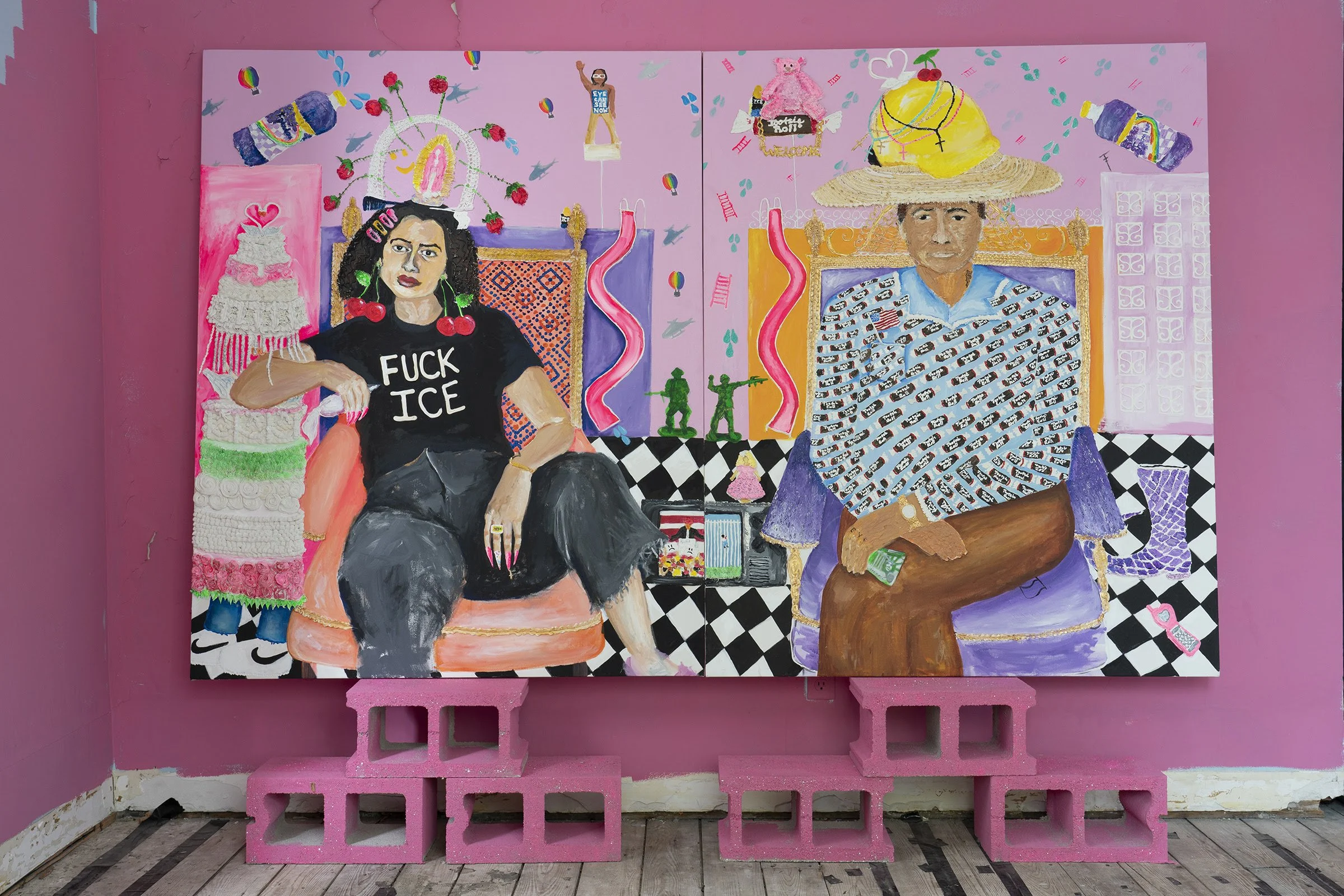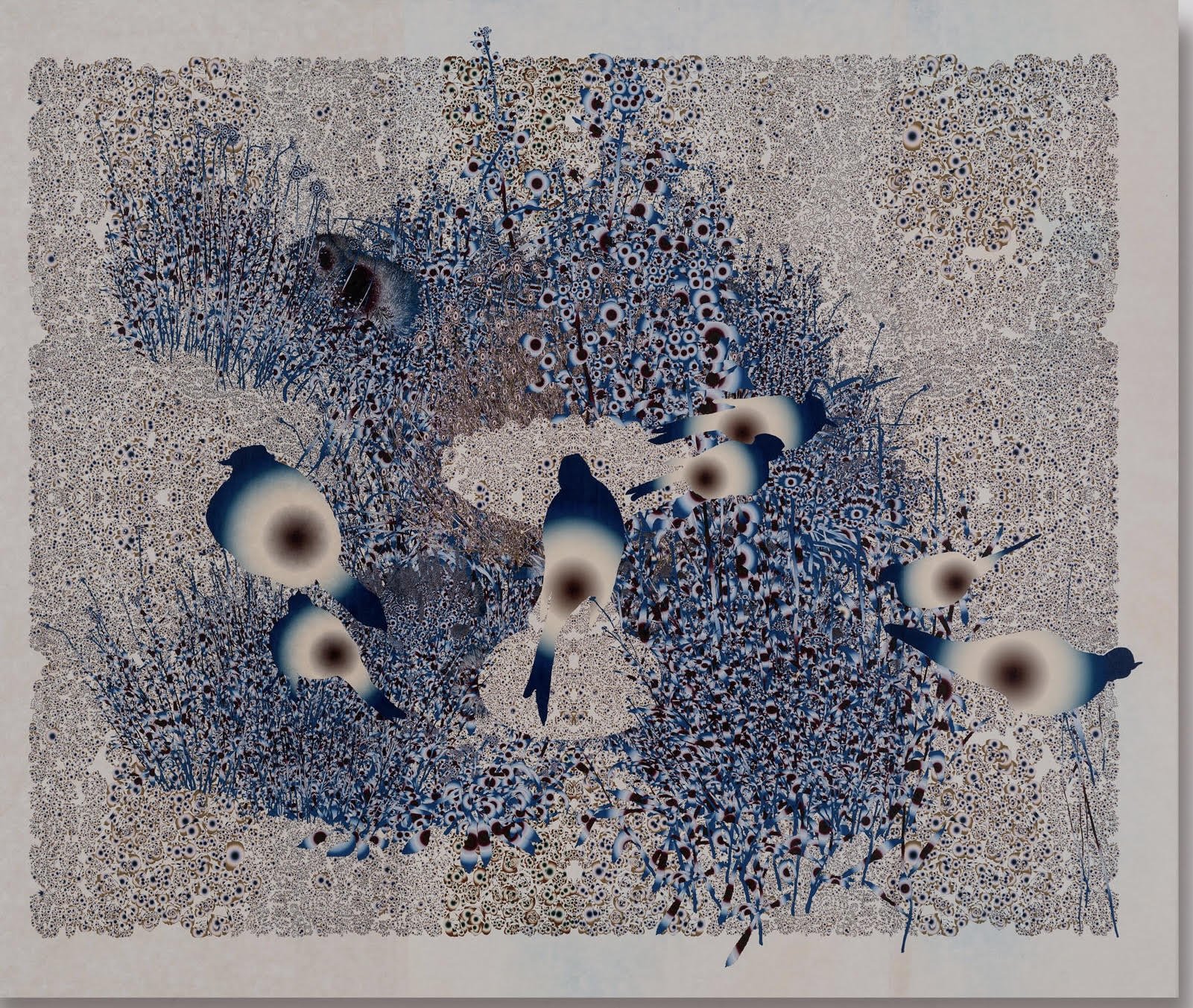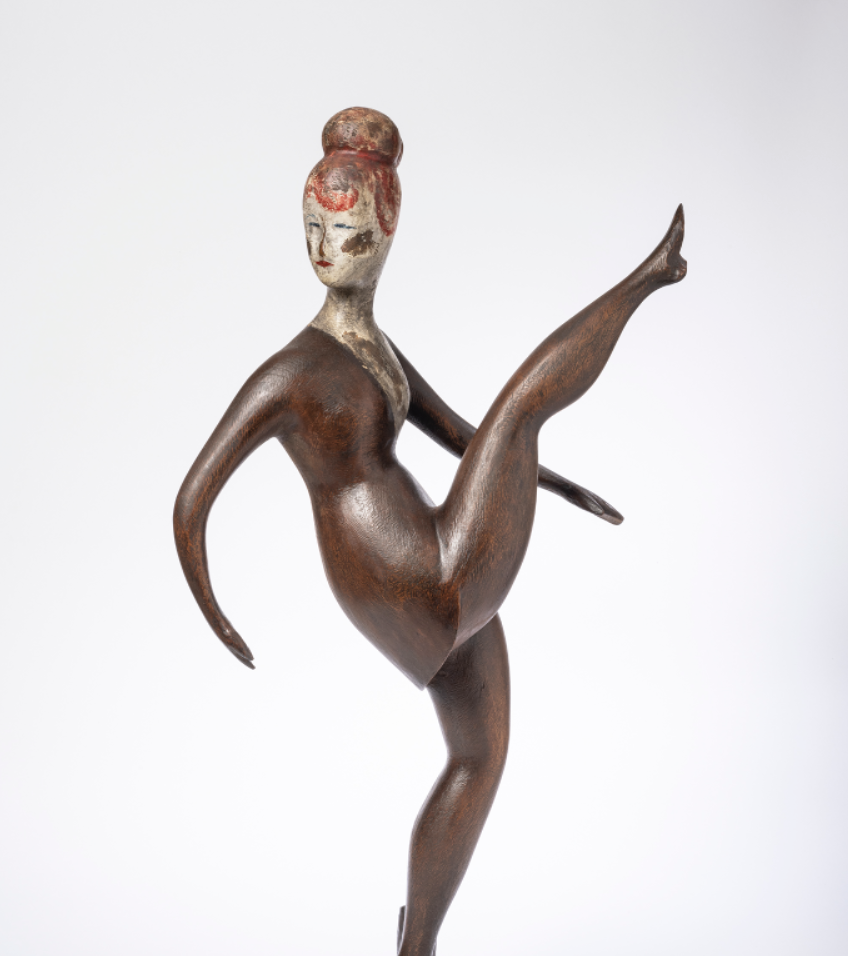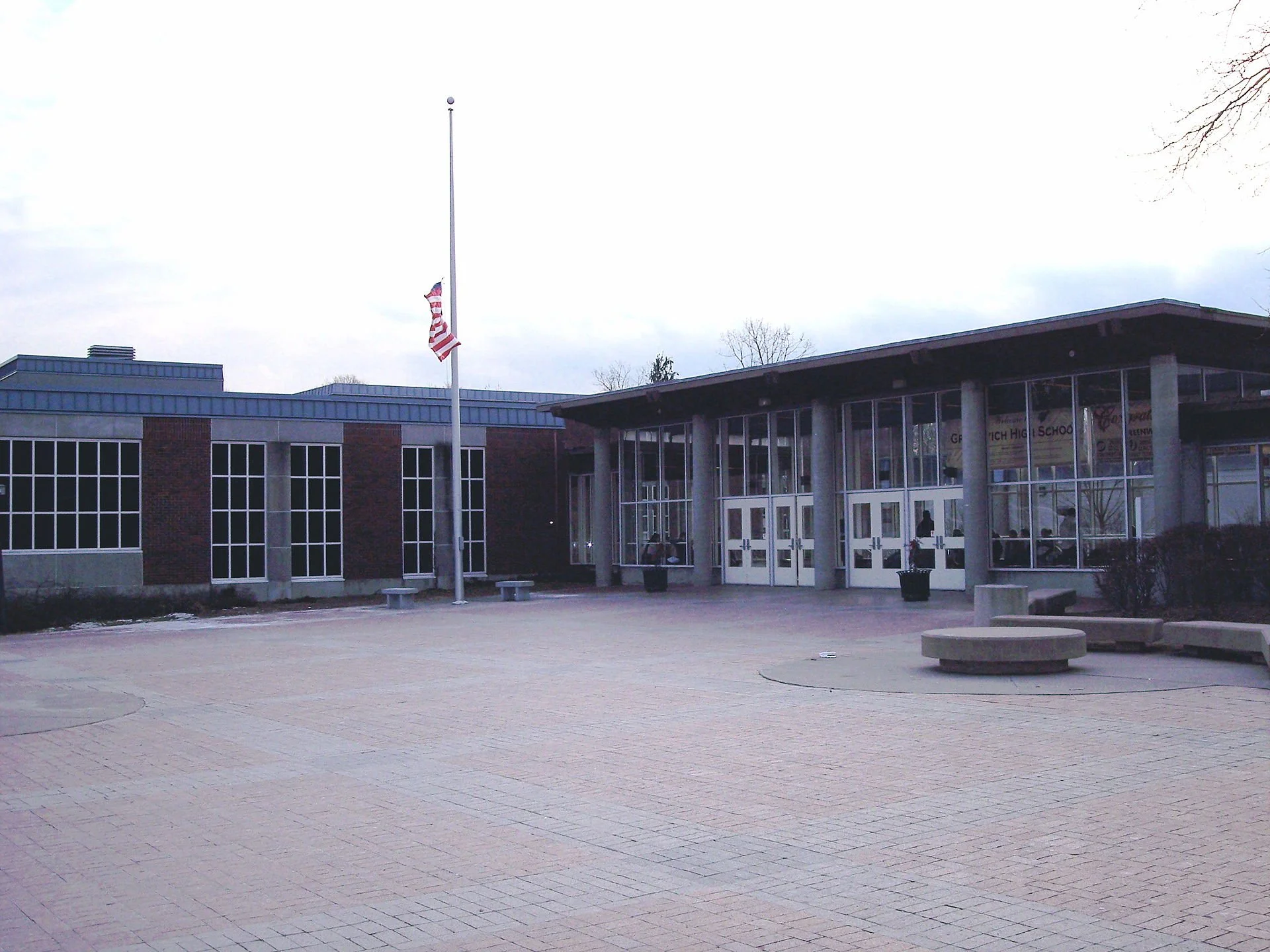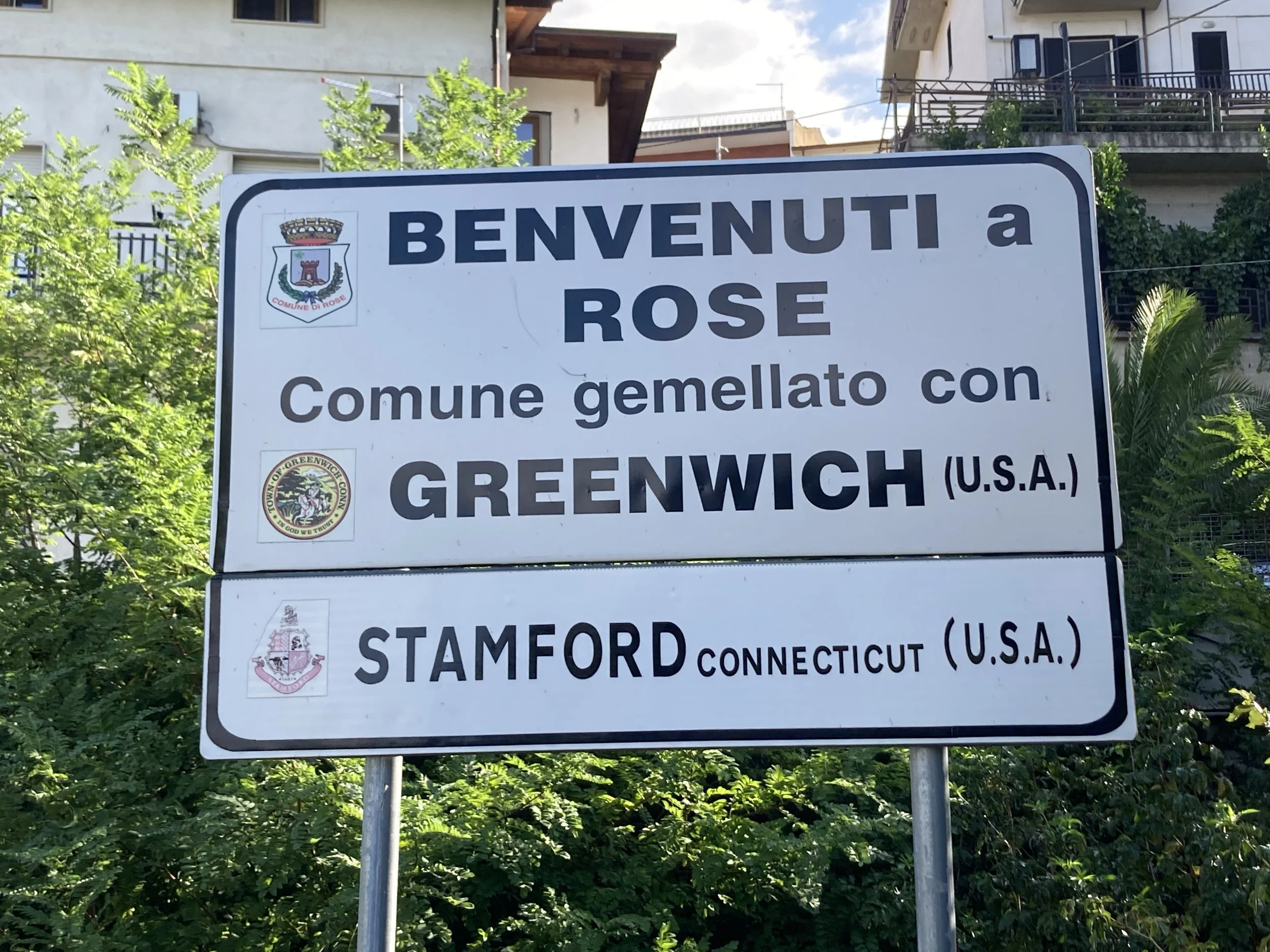
Between dislocation and belonging
From Yvette Mayorga’s current show, “Dreaming of You,’’ at the Aldrich Contemporary Art Museum, in Greenwich, Conn.
The museum says:
“Inspired by her mother’s work at a bakery after immigrating to the United States from Jalisco, Mexico, Mayorga frosts thick acrylics onto sculptures and canvases with piping bags and icing tips to achieve delectable textures. … Mayorga’s handicraft intimately immerses the viewer in the tension between dislocation and belonging that defined her girlhood as a first-generation Mexican-American in the Midwest in the ‘90s and 2000s.’’
In Greenwich, displaying a violent world
“Samurai Helmet” (Japan’s Edo Period — 1603-1868), in the show “Arms and Armor: Evolution and Innovation,’’ at the Bruce Museum, Greenwich, Conn., March 7-Aug. 11.
The museum says:
‘‘‘Arms and Armor’ brings together historical weaponry and natural history specimens to highlight parallels between combat in the human and natural worlds.’’
'Between the natural and the manmade'
“Fountain II’’ (pigment print, mulberry paper on linen), by Andy Millner, in his show “Floating World; The Light the Bird Sees,’’ at Heather Gaudio Fine Art, Greenwich, Conn., Feb. 24-April 6.
The gallery says”
“Millner’s work investigates the relationship between art and nature, the natural and the manmade. He began by using traditional pigmented materials on canvas to convey the complexity of lines and contours seen in organic forms, such as flowers, leaves or trees.’’
To her essentials
“Portrait of a Woman” ( oil and acrylic on cotton-duck; triptych), by Ian McKeever, at Heather Gaudio Fine Art, Greenwich, Conn.
Soothing wave action
“Jerri” (oil on canvas), by Kathleen Jacobs, on the show “Making Their Mark: 7 Women in Abstraction,’’ at Heather Gaudio Fine Art, Greenwich, Conn., Sept. 21-Nov. 4
“Artist's Home in Autumn, Greenwich, Connecticut’’ (c. 1895), by John Henry Twachtman
‘Insistent materiality’
Work by the Modernist artist Elie Nadelman (1882-1946, American, born in Poland) in the show “Material Matters,’’ at the Bruce Museum, Greenwich, Conn., through Sept. 24.
The museum says:
“Nadelman is best known for his sculptural explorations of pure form. Melding classical source material and folk art, Nadelman’s sculptures range from idealized heads and animals to genre subjects drawn from everyday life, such as acrobats, circus performers, and dancers.
“Featuring more than twenty sculptures, this show showcases the artist’s experimentation with materials. In the early 1910s, he created idealized, classical heads in conventional materials such as bronze, marble, and stone. He expanded his practice by the end of the decade to include wood and plaster figural sculptures inspired by his experience of living in New York City. From the 1920s until the end of his career, Nadelman increasingly gravitated toward inexpensive, nontraditional materials. … The painted, textured, and weathered surfaces of Nadelman’s sculptures—their insistent materiality—are part and parcel of Nadelman’s modernity.’’
Reinterpreting portraiture
“Doña-Maria” (collage on archival paper), by Rodriguez Calero, in the show “Self, assembled,’’ at the Flinn Gallery, Greenwich, Conn., through Feb. 1.
— Photo courtesy of Flinn Gallery.
The gallery explains that the show is a collection of collages that "probe the nature of identity" by "appropriating, fragmenting, layering, and unexpectedly juxtaposing images derived from personal and collective histories." Rodriguez Calero, Kevin Hetzel and Jason Noushin use diverse skills and experiences to create artwork that asks us to rethink how we interpret portraiture.
John O. Harney: Marketing abortion ruling; armed youth; ‘don’t say gay’ in Greenwich; not the ‘Flutie Effect’
Map by Tpwissaa
Greenwich, Conn., High School
From The New England Journal of Higher Education, a service of The New England Board of Higher Education (nebhe.org)
BOSTON
Could the anti-choice, forced-birth culture of the U.S. Supreme Court and many U.S. states present an advantage for New England economic boosters?
Massachusetts Gov. Charlie Baker told reporters that he had heard from a lot of companies that the recent Supreme Court decision removing the federal protection of the right to abortion may offer a big opportunity for Massachusetts to attract some employers whose employees would want access to reproductive-health services. Connecticut Gov. Ned Lamont called on businesses in states that limit abortion access to consider relocating to Connecticut.
In the context of choosing where to start or expand a business, big employers have occasionally written off New England as “old and cold” compared with economically and meteorologically sunnier spots. However, a 1999 poll by the University of Connecticut’s Center for Survey Research and Analysis, while admittedly dated, found an interesting niche for New England. International site-selection consultants, accustomed to Europe’s pricey, regulated environments, were less concerned with New England’s notoriously high costs than domestic site-selection pros. Key issues for the international consultants were access to higher education, an educated workforce and good infrastructure.
Peter Denious, chief executive of Advance CT, a business-development organization, recently told the Connecticut Mirror that such issues as diversity, equity and inclusion—and the state’s commitment to clean energy—could all help Connecticut align with the corporate goals of certain companies.
Our culture of active government, unionization and especially our human- resource development, could bode well once again in relatively enlightened New England.
Anti-semitism rising: The Anti-Defamation League (ADL) reported 2,717 anti-semitic incidents of assault, harassment and vandalism in 2021 in the U.S., the highest number since the ADL began tracking anti-semitic incidents in 1979, according to the group’s annual Audit of Antisemitic Incidents. These included more than 180 anti-semitic incidents in New England. And nationally, 155 anti-semitic incidents were reported at more than 100 college campuses. Meanwhile, tension between anti-semitism and anti-zionism, including the boycott, divestment and sanctions (BDS) movement, is challenging on campuses and beyond
Packing heat. More than 1 million U.S. adolescents (ages 12 to 17) said they had carried a handgun in 2019-20, up 41% from about 865,000 in 2002-03, according to a study by researchers at Boston College’s Lynch School of Education and Human Development, using data from the National Survey on Drug Use & Health. The socio-demographic profile of the gun carriers also changed. Carrying rates grew from 3.1% to 5.3% among white adolescents, from 2.6% to 5.1% among higher-income adolescents, and from 4.3% to 6.9% among rural adolescents between, while rates among Black, American Indian/Alaskan Native and lower-income adolescents decreased.
“Don’t Say Gay” here? In April, Mount Holyoke College President Sonya Stephens wrote here that Florida legislation dubbed by opponents the “Don’t Say Gay” bill, was part of a nationwide wave of proposal laws linking divisive issues of race, sexual orientation and gender identity to parents’ concerns about what their children are being taught in public schools. These bills not only undermine the real progress that LGBTQ+ people have made in society over the past 50 years, Stephens wrote, but they also further erode trust in some of our most under-compensated public servants: school teachers and administrators.
On July 1, U.S. Secretary of Education Miguel Cardona noted that the Florida parents and families he’d spoken with said the legislation doesn’t represent them and that it put students in danger of bullying and worse mental health outcomes.
In Cardona’s home state of Connecticut, meanwhile, the Greenwich School Board adopted a new Title IX policy unanimously, but not without controversy. Edson Rivas and Colin Hosten of the Fairfield County-based Triangle Community Center Board of Directors wrote in Connecticut Viewpoints that the policy adopted by the Greenwich School Board “conspicuously removes any language referring to gender identity and sexual orientation” which was part of the original version of the policy introduced last fall. The board replied that “this policy covers all students, whether or not certain language is included.” But Rivas and Hosten aren’t buying it. “If the substance of the policy remains the same, as they say, then the only effect of removing the language about gender identity and sexual orientation is the linguistic pseudo-erasure of the LGBTQ+ community in Greenwich Public Schools.”
Truth to tell: Recently, the American Association of Colleges and Universities (AAC&U) named 75 higher-education institutions to participate in the 2022 Institute on Truth, Racial Healing & Transformation (TRHT) Campus Centers as part of an effort to dismantle racial hierarchies.
As we at NEBHE and others have wrestled with a “reckoning” on race, gender and so many other wrongs, the “truth and reconciliation” concept has always made sense to me. Check out, for example, the thoughtful book Honest Patriots exploring how true patriots in post-World War II Germany, post-apartheid South Africa and the U.S. in the the aftermath of slavery and the genocide of Native Americans loved their country enough to acknowledge and repent for its misdeeds.
Under the AAC&U initiative, campus teams develop action plans to advance the parts of the TRHT framework: narrative change, racial healing and relationship building, separation, law and economy. The institute helps campus teams to prepare to facilitate racial-healing activities on their campus and in their communities; examine current realities of race relations in their communities and the local history that has led to them; identify evidence-based strategies that support their vision of what their communities will look, feel and be like when the belief in the hierarchy of human value no longer exists, and learn to pinpoint critical levers for change and to engage key stakeholders.
Among participating New England institutions: Landmark College, Middlesex Community College, Mount Holyoke College, Suffolk University, the University of Connecticut and Westfield State University.
Another problem with over-incarceration. NEBHE has published a policy brief about the effects of higher education on incarcerated people in New England prisons and jails—and increasingly broached conversations about the dilemmas created by the world’s biggest incarcerator — America. Now, another byproduct surfaces: Children with an incarcerated parent have exceedingly low levels of education. The most common education level for respondents from a low-income family who had an incarcerated parent was elementary school, according to research by a group of Wake Forest University students who put together an article for the Nation Fund for Independent Journalism. The students set out to understand how the academic achievement, mental health and future income of children of incarcerated parents compare to those with deceased parents. Just under 60% as many respondents with an incarcerated parent completed a university education compared to the baseline of respondents with neither an incarcerated nor deceased parent.
Acquisition of Maguire: I first heard the term “Flutie Effect” in the context of former Boston College Admissions Director Jack Maguire. The term refers to the admissions deluge after the BC quarterback Doug Flutie threw the famed Hail Mary pass (caught by the less-famous Gerald Phelan) in 1984. Flutie won the Heisman Trophy, then pursued a pro career, first with Donald Trump’s New Jersey Generals in the USFL and then in the Canadian Football League, with a few bumpy stops in the NFL.
But Maguire attributed BC’s good fortune not to the diminutive quarterback but to the college’s “investments in residence halls, academic facilities, and financial aid.” In 1983, Maguire, a theoretical physicist by training, founded Maguire Associates and introduced the concept of “enrollment management,” combining sophisticated analytical techniques, customized research and deep experience in education leadership with a genuine enthusiasm for client partnerships. Maguire became a sort of admissions guru whose insights we have been pleased to feature.
Now, higher-education marketing and enrollment strategy firm Carnegie has announced it is buying Maguire Associates. Not to be confused with the foundation that administered the Carnegie Classification of Institutions of Higher Education, which recently moved to the American Council on Education, nor the Carnegie Endowment for International Peace, which has encouraged disarmament, this Carnegie, also founded in the 1980s and based in Westford, Mass., is formally known as Carnegie Dartlet LLC. Its pitch: “We are right definers. We are your intelligence. We are truth revealers. We are your clarity. We are obstacle breakers. We are your partners. We are audience shapers. We are your connection. We are brand illuminators. We are your insight. We are story forgers. We are your voice. We are connection creators. …”
John O. Harney is executive editor of The New England Journal of Higher Education.
Hands across the sea
Our friend Bill Perna, who grew up in Greenwich, was very surprised to come across this sign while driving into the town of Rose in Italy’s Calabria region.
— Bill Perna
Don Pesci: Critical Race Theory is intellectual tripe
The Indian Harbor Yacht Club in rich Greenwich, Conn., a town where admission is all about money, not race.
VERNON, Conn.
Mike Winkler, a progressive – very progressive -- Connecticut state representative from Vernon, tumbled into a postmodern mare’s nest when he attempted, poorly, to discriminate between different kinds of discrimination.
During a public hearing on bills before the state General Assembly Planning and Development Committee, Winkler said that Greenwich Housing Authority member Sam Romeo had counted Asian-Americans among minorities suffering from invidious discrimination. Winkler had just suggested that Greenwich officials had deployed zoning regulations to deny access to African-Americans, and here was a Housing Authority member claiming that 37 percent of the population of Greenwich were members of minority groups.
Well, yes, Winkler grudgingly conceded. However, “You count Asians and other minorities that have never been discriminated against,” Winkler said during the hearing, at which point the frigid waters of Critical Race Theory closed over Winkler’s head. Critical Race Theory holds that the law and legal institutions are inherently racist, and that race itself, instead of being biologically grounded, is a social construct used by white people to advance their own political and economic interests at the expense of people of color.
As a matter of history and common sense, one must admit that Winkler may have had a point: There are different kinds and degrees of discrimination. But, flourishing the wrong end of the point, he ended up stabbing himself.
Surely all participants in the conference shown on YouTube would agree there are differences in degrees and kinds of discrimination. The discrimination that Martin Luther King Jr. bravely faced during three protest marches from Selma, Ala., to the state capital of Montgomery surely was different in kind and ferocity than that faced by some black and white Americans attempting to move into Greenwich. In the matter of discrimination, things have improved remarkably since dogs were set on Selma protestors in 1965.
If Greenwich had ever relied on redlining to maintain what Critical Race Theorists may regard as the purity of the towns’ racial stock, those provisions have long since been swept from zoning regulations throughout all of Connecticut’s municipalities. Times change, sometimes for the better.
No, no, nearly everyone from butcher to baker to candlestick maker cried, more or less in unison. The price of admission to Greenwich is dollar-related. Not everyone can afford to live in Greenwich. If state Senate President Martin Looney has his way, soon progressive Democrats may impose a tax on Connecticut’s “Gold Coast” mansions, which would have the unfortunate effect of making access to wealthy towns throughout the state even less attractive to people of color who might be able to afford the price of the mansions. Zoning provisions in Greenwich do not exclude potential admission to the town for reasons of race, religion or color -- provided that the potential applicants have sufficient greenbacks in their bank accounts.
Howitzers were fired at Winkler from every direction. Republican state Sen. Tony Hwang, an Asian-American, stepped forward to turn against Winkler a point often advanced by Critical Race Theory-soddened Democrats. According to an account in a Hartford paper, “Winkler, a white man, simply cannot grasp the pervasiveness of Asian-American bias, ‘‘ Hwang said. ‘You believe they have been discriminated less. You have never been in their shoes.''' Democratic Atty. Gen. William Tong, the state’s highest-ranking Asian-American elected official, joined in. Tong “recalled being asked during a debate in the House whether Asian- Americans count as people of color. ‘Let me assure you that Asian-Americans count and the hate and discrimination against us is real,’ Tong said Tuesday.’’
The public scourging followed its usual course, and the sinner eventually showed repentance, apologizing for his ill-considered statement. “My comments are inexcusable, especially with the recent rise in violence against Asian-Americans,” Winkler said, according to a piece in CTMirror. “There is a long, painful history of Asian-Americans experiencing racism in this country, and I sincerely regret that I ignored that history and those experiences in my comments.”
No one knows at this point whether Winkler will receive an absolution from the new priests of Critical Race Theory. And no Republican office holder has yet emerged to claim that Republicans generally were not willing to surrender to Democrats pride of place in the matter of resisting aggressions against blacks. In past times, the Democrat Party had supported slavery, Jim Crow, the Klu Klux Klan, and the loosing of dogs on courageous protesters such as Martin Luther King Jr. who fought for freedom.
So it goes. No one seems willing to close on the chief point – that, while traces of both racism and discrimination may still exist somewhere in America’s dark cultural backwaters, the beast has largely been caged. Times really have changed. King actually won his battle for freedom, one of the reasons the nation celebrates Martin Luther King Day.
If we are determined to proceed along lines indicated by Critical Race Theory, Democrats, historically associated with the raw racism of the post-Civil War period – Woodrow Wilson, an early progressive, approvingly showed in the White House in 1915 the film Birth of a Nation, a celebration of KluKluxery – should change the name of their party, so warmly have Democrats in the past embraced racism and discrimination. This is worse than nonsense. It is reckless and silly nonsense.
The view that the sins of the father should fall like an executioner’s axe on the necks of their distant grandsons and granddaughters is, combined with cancel culture, a petard that may be used to destroy the foundational principles that King referred to in his “I have a dream Speech.”
Zoning regulations in Greenwich are not “inherently racist” because they are not racist at all. The Greenwich zoning board is not motivated by racism. And Critical Race Theory is intellectual tripe. You cannot denounce a racist past by bleaching it out of history books, and racial McCarthyism -- according to which any member of a presentday political party is deemed racist because the political party with which they associate had in the past promoted racism – is every bit as destructive as political McCarthyism, when the imputations are wrong and unjust.
It’s long past time for everyone to grow up.
Don Pesci is a Vernon-based columnist.
Trump serves them well
Indian Harbor Yacht Club, in Greenwich
From Robert Whitcomb’s “Digital Diary,’’ in GoLocal24.com
There was a terrific article recently in The New Yorker magazine about how rich Republicans in Greenwich, Conn., once known for their moderate, modest, honest, civic-minded “Eisenhower Republican” ways, signed on as Trump supporters. For a simple, amoral reason: He promised to make these already rich people richer by cutting their taxes and slashing regulations and did so. And Trump and “Moscow Mitch” McConnell plan to offer them even more goodies. In short, it’s all about appeals to pure selfishness, which work very well with this crowd: Vast sums have been flooding into Trump’s campaign coffers from Greenwich plutocrats.
The author, Evan Osnos, who used to live in Greenwich himself, also noted the increasing separation of these people from their communities. Look at how so many of them in places like Greenwich have installed very high, menacing walls around their estates, replacing the low stone walls and picket fences that were common around mogul/CEO estates back before the rise of Baby Boomer mega-greed and wealth exhibitionism starting in the ‘80s. I lived in Connecticut in the ‘60s and have noticed the change in Greenwich and other affluent Fairfield County towns since then.
Of course, pretty much all of us look out for Number 1 but some take that to extremes.
To read the piece, please hit this link.
They’ve got us under their skin
“Roosterfish” (cleared and stained specimen), in the show “Under the Skin,’’ at the Bruce Museum, Greenwich, Conn., through July 19
— image courtesy of Dr. Matthew Girard.
The museum (in one of America’s richest towns) explains that “Under the Skin’’ features technological innovation and the beauty of nature. It includes real biological specimens as well as imagery created by technology, including CT scanning, infrared cameras, scanning electron microscopes and other devices undreamt of a decade ago. In ‘‘Under the Skin,’’ a roosterfish skeleton or the inner ear of a frog becomes a work of art. “Both in science and art can one find new discoveries by peering beyond the surface and searching for something deeper.’’
The Round Hill Congregational Church in Greenwich, part of the Round Hill Historic District, one of the richest parts of a very rich town.
— Photo by Magicpiano
Border-jumping cougars in N.E.
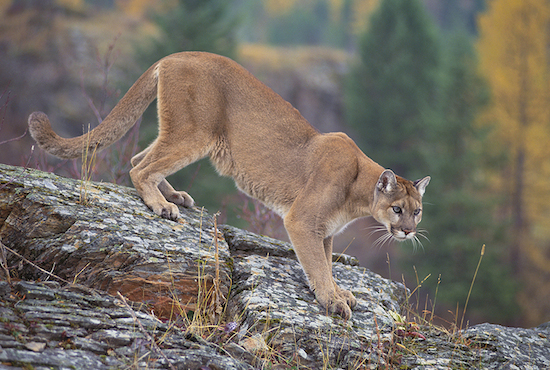 ---- U.S. Fish and Wildlife Service photo
---- U.S. Fish and Wildlife Service photo
By BILL BETTY for ecoRI News
Sue Morse is an expert in natural history and one of the top wildlife trackers in North America. A recent article about her caught my attention. She believes the northern counties in Vermont, New Hampshire, Maine and New York would be ideal places for migrating cougars to reoccupy. These areas have what pumas need to survive: prey, open space and cover.
Morse, the founder of Keeping Track, believes that South Dakota cougars will spread to Manitoba and then to Ontario. Their descendants will eventually reach New England.
Besides Ontario, it’s likely the origins of these recruits to New England will be from Quebec and the Maritime Provinces. Mountain lions have already been identified there. Ontario has them as well, and Morse’s Manitoba trekkers will only add to the number of free-ranging North American genotype cougars now found in the province. Since all North American subspecies are virtually indistinguishable, this will hardly make any difference in their genetic makeup. And we’ll still call them eastern cougars no matter what anyone says.
The Ontario Puma Foundation has estimated the number of mountain lions at 550. One has been shot, another captured and about 24 confirmations have been made. Nearly 500 pieces of evidence have been recovered. Despite this, obstructionists continue to issue denials, suggesting that all of these cougars are males — hence no natural reproduction.
Studies by Marc Gauthier and Anne-Sophie Bertrand during the past two decades have confirmed 19 mountain lions in New Brunswick and Quebec. Gauthier’s latest estimate of an existing population in Quebec is 10 to 100 pumas. Three mountain lions have been killed in Quebec, including a lactating female cougar that was hit by a truck near the New Hampshire border.
Advocates who favor restocking the Northeast by releasing Western cats into the region reject any suggestion that natural reproduction is taking place in the East because it undermines their raison d'être.
Five Nova Scotia events would be categorized as “class II” discoveries elsewhere, including the 1986 incident where the Bower family carried an unconscious cougar to the side of the road — similar incidents have happened in New England. Nova Scotia officials have classified this knockdown as “virtually certain.”
In addition, a number of provincial employees, including the head of the province’s Endangered Species Division, have reported sightings or found evidence.
In short, what we have sitting across the Canadian border is Montana is an enormous tract four times the size of Texas where mountain lions are present in sufficient numbers to persist. If pumas can drift down here from Ontario, they can just as easily wander into northern New England from Quebec, New Brunswick and Nova Scotia.
Many dispersers from eastern Canada will not go very far and will end up establishing home ranges nearby, but a few of these young cats will head south and trickle into New England. For a mountain lion, the Northeast is a hop, skip and a jump from New Brunswick, Quebec, Nova Scotia and Ontario, as opposed to the Black Hills, which are 1,800 miles away and a 22-month cat walk.
Morse and I hold similar views on this subject. Eastern Canadian migration is, in fact, what I have been suggesting for the past decade. She believes this dispersal of cougars to New England and New York may take as long as 30 years for a breeding population to return. Judging by the number of reports recorded and the evidence collected in the Northeast, it’s my view that this migration has been ongoing for decades. It’s possible that we already have a number of mountain lions in New England with ancestry from Quebec or nearby provinces. Others here may be from Michigan and other Midwest states.
Northern New York, New Hampshire, Maine and Vermont have brutal winters, deep snow and the lowest deer population in the Northeast. If Morse believes that these are ideal are conditions for puma, then what about Spencer, Mass., Pomfret, Conn., or Stanford, N.Y.? They all have relatively moderate weather, less snow, more deer and plenty of open space. These places also have farms, gardens and orchards. It’s where people have chosen to live, and now mountain lions are being seen there.
Maurice Hornocker, the dean of mountain lion researchers, has a simple theory that explains the urban cougar phenomenon. He believes “people attract deer” by providing food for them in the form of flowers, vegetables, fruits trees and the like, and the “deer in turn attract cougars.” Hornocker told me that he thought cougars would “start showing up in New England.”
Much of the evidence confirming lions has been discovered near settled areas. In 2011, a cougar was road killed on the Merritt Parkway, which runs through Connecticut’s Fairfield County. A million people live there. So do 30,000 deer. Pumas have been discovered in places such as Greenwich, Conn. Cougars of the Valley, a nonprofit based in Canton, Conn., has enlisted the help of local houndsmen to locate cougars using specially trained scat dogs.
Michael Keveny at Clark University analyzed potential sites for cougar reoccupation in Massachusetts and concluded that many parts of the state had adequate habitat for pumas to survive. Some like Cape Cod and Bristol County, Mass., he considered the “best.” Sport hunting zones around Boston have kill totals that are five times higher than those from the state’s three western counties.
In New York State, it’s much of the same story. John Laundre has identified the Adirondacks as a potential site for cougar reoccupation. He believes that the area could support as many as 390 pumas. Western New York could support a lot more. Deer kills in some southern and western New York counties, for example, are more than 10 times higher than in the Adirondacks. With a million whitetails, New York is a fertile hunting ground for apex predators.
Maine’s highest deer harvest was reported in the Midcoast region, where many of the state’s residents live. Deer kills in these five districts far exceed those from the interior. In fact, 100 northern townships had zero sport hunting kills last year. One person who presumably is watching all of this is Nathan Webb, a carnivore specialist and mountain lion expert with Maine’s Department of Inland Fisheries & Wildlife, who was recruited from Alberta, Canada.
If Burlington, Vt., and Lake Placid, N.Y., are ideal habitat for mountain lions in Morse’s opinion, then the towns and cities in New England and Atlantic Canada surely meet the definition of cougar heaven. There have been reported sightings of large cats in Rhode Island. The urban/woodland interface on the outskirts of coastal settlements have everything that mountain lions need to survive: numerous whitetails, small mammals, song birds and waterfowl; adequate edge habitat in the form of fields and clearings; and abundant patches of woods and brush that provide excellent cover.
Ontario dispersers will show up in New England or New York at some point if they haven’t already. It’s possible some of the recruits that establish home ranges in the Northeast will be migrators from Nova Scotia, Quebec or New Brunswick. A few that pass through northern New England will probably continue on to more hospitable places such as New Milford, Conn., or Rochester, Mass. Their arrival will not go unnoticed by other members of their species.
Alan Rabinowitz, CEO of Panthera, lives in Connecticut. He believes there is a small population in the region that is maintaining itself and breeding. He doesn’t accept the explanation that every cougar wandering the edges of suburbia is a former pet that managed to escape. If he’s right, then some local mountain lions must be border jumpers that found their way to southern New England from their natal ranges in eastern Canada by following rivers or hugging the coast.
We should celebrate the arrival of mountain lions in New England. Vermont has done so by putting the face of a catamount on its license plate. The Massachusetts Division of Fisheries & Wildlife has taken a step in the right direction by stating that “a large cat would be safeguarded under state statute — a welcome visitor, like any other indigenous animal (other than threat situations).”
Acknowledgement of mountain lions in their jurisdictions will be the next step for all of the New England wildlife agencies. I’m not optimistic that it will happen soon. Some states have sent officers to tracking schools in Wyoming or exchanged personnel with western states to learn firsthand about pumas. Others have circled the wagons. Money and manpower are issues.
The odds of this apex predator surviving and reproducing along the coast in Maine, Connecticut and Rhode Island or in the rolling hills in southern Vermont or New Hampshire are much better than in the hinterlands of New England. Abundant resources make these locations a predator’s paradise. And you don’t have to be one of the puma illuminati to figure this out.
Bill Betty is a Richmond, R.I., resident.
Robert Whitcomb: A civic celebration and a cruise
I enjoyed a piece of small-town Americana on Sept. 17, when I gave a talk at a luncheon meeting of the Bristol (R.I.) Rotary Club. Oh, for a renaissance of such civic organizations!
The club is part of Rotary International, which aims to bring mostly local business and professional leaders together to promote humanitarian service, boost ethics and encourage friendship and goodwill. The few dozen people at the meeting were thirtysomethings to eightysomethings; everybody seemed to have current or past professional or business connections.
I felt transported back to the Fifties. The meeting began with the Pledge of Allegiance, the singing of the National Anthem (with an 89-year-old lady playing the piano) and a nondenominational prayer. After lunch, attendees sang some pre-rock songs. Then came my talk, about the Islamic State, and smart questions.
It would be hard to find a nicer and more engaged group. Participating in such organizations has tended to decline in America in the last few decades. That’s sad, because they do a lot of fine stuff for their localities and the nation, raising money to fight illnesses, promoting education (especially through scholarships), sprucing up parks and many other good causes. Their decline is of a piece with the general slide of civic life. It’s harder these days to get people to run for office, serve on local boards and join charitable drives.
Cynics like to make fun of such upbeat, boosterish organizations, but they address the need of a healthy democracy to have a wide variety of agile nongovernmental organizations serving the public.
Increased mobility, more dispersed families, shorter-term jobs, the distractions of life on the Internet and the general weakening of the middle class have tended to shrink the memberships of service organizations such as Rotary. Let’s hope that can be reversed. That these clubs generally eschew “virtual’’ meetings online in favor of frequent face-to-face encounters is a particular plus. In-person members often become real friends, and thus more likely to encourage themselves and their fellow members to follow through on good works.
Later, I walked around Bristol, and marveled at its antiquarian beauty.
xxx
The next day I had a meeting on a small (perhaps 32 feet long) sailboat usually moored off Stamford, Conn. We sailed west to off Greenwich, where we anchored near an island with a gazebo on it. It was late in the season, of course, and there were only a couple of other people there. The menacing Manhattan skyline was in the distance.
We went swimming, in remarkably warm water, and talked about a project in China while admiring the beauty of the day – a glory that seems to go on day after day in September and early October in New England. For a few weeks, we have a champagne climate, albeit tinctured with melancholy about what will follow soon enough. But then “the American Season’’ as it has been called, is both a poignant annual ending and an often boisterous beginning.
To the north could be seen the waterfront mansions of the hyper-rich in Greenwich, not that far from slums in Stamford. The “1 percent’’ is what Greenwich is most famous for, and even more so since Wall Street became so much more powerful and rich in the past few decades, via hedge funds, private-equity firms and investment banks. (That the huge California Public Employees’ Retirement System has decided to quit hedge funds might start a wave that could do some damage to a few of the owners of these houses.)
After we had been at anchor for a while, a young woman in our party said that she had to get back to New York pronto. So our skipper decided to sail the dinghy we had been towing all the way to Greenwich, from whose shores the young woman would make her way to the train station. She made the train, but the wind died and so our captain (a film director!) had to row most of the way back to the bigger boat, where we grew slightly anxious waiting.
Finally the wind came up a bit and we saw his red sail, in the sunset. “There’s John!,’’ we shouted, trying to restrain the sound of relief.
Then we slowly made our way back to Stamford through calm and bioluminescent waters; thank God for the inboard motor. I stayed that night in a cheap Stamford motel, some of whose illegal-alien workers might also be leaf blowers on the grounds of the Greenwich estates. There were cigarettes on the motel’s floors and its “breakfast’’ provided only Cremora for coffee. But perhaps that TV’s in the rooms showed very fuzzy images of athletic pornography to channel surfers was adequate recompense for many weary travelers.
Robert Whitcomb (rwhitcomb51@gmail.com) is a Providence-based writer and editor who oversees this site.
Some real and movie time with Pete Seeger
In the late spring of 1970, a group of about a dozen of us (I was along for the ride with a girlfriend of the time) spent a few hours with the mellow-voiced Peter Seeger at his 17-acre rustic homestead, in Beacon, N.Y., on a bluff overlooking the Hudson River. It had been a lush, warm spring, famous for anti-Vietnam War demonstrations. We had a cookout, at which Seeger was an affable host. He, of course, sang and played the five-string banjo, and a few others joined in making music.
Way down below on the river was a sloop that he owned that he was using in the early stages of leading a campaign to stop the likes of General Electric and other organizations from dumping toxins (some carcinogenic) into the river (which that day, despite its poisons, looked like 18th Century painting of the Rhine. Gorgeous!). It seems astonishing now to think of what we dumped into our public water, both as individuals and as institutions.
I generally disliked folk songs back then -- the lyrics seemed too sentimental and sometimes far too preachy and the tunes repetitive and clunky. I find them easier to take these days because I hear them as part of the broad flow of history. Or maybe I'm just getting hard of hearing....
Meanwhile, take a look at this segment of the very funny and sad movie The American Ruling Class. In it, Pete Seeger is walking, banjoing and singing down a road in what seems to be a very pastoral part of Greenwich, Conn., a capital of the sometimes rapacious capitalism that the old leftie hated. I think it's pretty funny, as is much of the movie, directed by John Kirby, produced by Libby Handros and with writer/editor Lewis Lapham as the master of ceremonies. He takes us to a lot of other celebrities commenting on American society in the years before the Great Crash of 2008.
Comment via rwhitcomb51@gmail.com
The big dripper
"Jack the Dripper,'' by JOE FIG (courtesy of the artist and the Tierney Gardarin Gallery, New York), at the Bruce Museum, in Greenwich, Conn., in the current "Artists' Studios: Small-Scale Views'' show.
The "Jack'' here is, of course, famed abstract expressionist Jackson Pollock, whose violent alcoholism would have been denounced by the quiet and dignified alcoholics living in the famous rich precincts of Greenwich.
